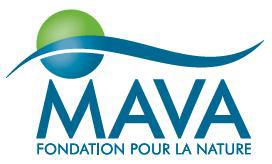
They are Europe’s smallest vultures, and worryingly out of the four species of vultures in Europe, they are the one that is still in decline. The LIFE Rupis conservation project in the Douro Valley that borders Spain and Portugal aims to reduce Egyptian vulture mortalities and improve breeding success in one of the densest and most important nucleus of this species in Europe.
Egyptian vultures
Easily spotted thanks to their bright yellow head and black and white plumage, the Egyptian vulture is the smallest vulture in Europe, weighing around 2kg. Egyptian vultures are Europe’s only migratory vulture spending its winters in Sub-Saharan Africa and returning from March to reproduce in Europe.
Egyptian vultures in Europe
In 2007 the species was declared globally ‘endangered’ by the International Union for the Conservation of Nature’s Red List. In Europe the population of Egyptian vultures has declined by a staggering 50 percent in the last 40 years and on the Balkan Peninsula has declined by 80 percent leaving just 40 pairs. The majority of the European population is found on the Iberian peninsula with an estimated 1,300 – 1,500 pairs, the remaining populations being in France (80 pairs) and Italy (10 pairs).

The drastic decline of the species in Europe is the result of loss of habitat, shortage of food through changes in land use, and mortality – due to illegal wildlife poisoning not just in Europe but along the migratory flyway between the summer and winter ranges, electrocution and collision with cables and windfarms.
LIFE Rupis
Led by the Portuguese Society for the Study of Birds (SPEA) and launched in 2015, LIFE RUPIS projects aims to strengthen the population of Egyptian vultures in the Douro valley, a stronghold for the population on the Iberian Peninsula.

With funding from the European Union’s LIFE+ programme and the MAVA Foundation, LIFE Rupis will work to reduce the mortality of the 135 breeding pairs in the Douro valley that borders Spain and Portugal to improve the breeding success of the Egyptian vultures.

Tracking Egyptian vultures
The migratory Egyptian vulture carries out a 7,000km round trip between their summer and winter grounds in sub-Saharan Africa. To better understand their travels the LIFE Rupis has been tracking Egyptian vultures with GPS transmitters, a first for Portugal.
Before they head off on their migration wild young and adults were caught and fitted with a small GPS transmitter. Weighing between 30g and 40g GPS transmitters are fitted on the backs of the vultures to track their movements without having any significant impact on the birds themselves. The highly efficient solar powered satellite transmitters send their GPS position over the mobile communications network and can provide as many as 500 location-fixes per day. Using this data we can track these birds to identify the areas they use to feed while in the Douro valley, and the migration routes that will help the LIFE Rupis team better understand the threats they may face during their migration.
Supplementary feeding
One of the issues facing Egyptian vultures in Europe is a reduced availability of food. The LIFE Rupis project are setting up a network of feeding stations across the Douro Valley where donations from local butchers and other animal by-products are placed to support the population of the species.
Tackling threats
The project is tackling the most important threats to Egyptian vultures – illegal wildlife poisoning and electrocution risk. Like other vulture species, the illegal use of poison by hunters and farmers to control unwanted mammalian predators and feral dogs is the biggest threat to Egyptian vultures in the region and can have devastation impact on populations. LIFE Rupis have been working with Portugal´s police force GNR to create an anti-poison dog unit – comprised of a dog highly trained to detect dead animals and poisoned baits and handler. This unit is being used to patrol the area in order to establish a poison-free area by controlling and removing poisoned baits before they can negatively impact local wildlife.

Electrocution is another major threat but is often overlooked, when perching on medium tension electrical cables. To tackle this threat the team are working with EDP Distribuição, in Portugal and Spain’s Iberdrola and Red Eléctrica de España to insulate the most dangerous power lines.

For more information about the project follow #LIFERupis on Twitter or Facebook and keep an eye on our website as we regularly publish news from the project.






